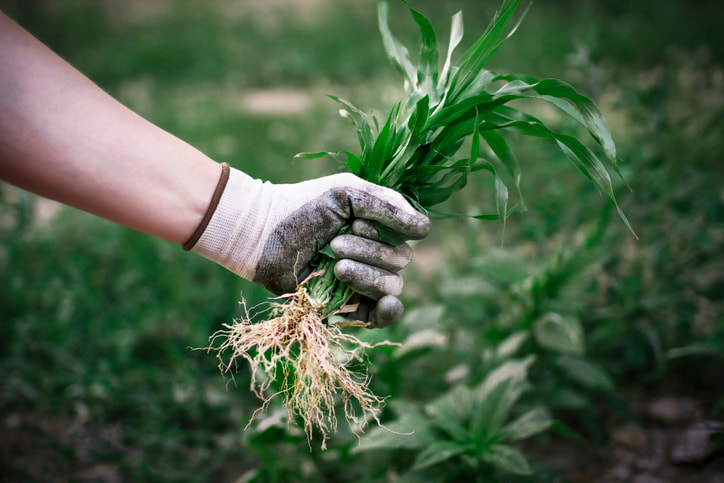As the snow melts and the days lengthen, your mind may wander to the fast-approaching time when you can pop seeds into fertile soil and transplant hardy little sets in rows. However, memory may remind you that with the burgeoning spring comes pests! Are you looking for ways to avoid and/or eliminate garden pests? Do you want to know how to control pests in the garden? Read on to learn some natural, cost-effective ways to control pests in your garden this spring.
Do Some Research
Investigate common garden pests in your area. Note the pests that already exist in your backyard. Knowing what you are and may be dealing with lets you be armed and ready.
Pay attention to your soil: Healthy plants are more likely to withstand pests and diseases. To grow healthy plants, you need healthy soil. Use a soil test kit to determine soil requirements. You can’t grow wrong by adding organic matter (compost, farmyard manure, leafmould) and keeping tilling to a minimum.
Choose Pest and Disease-Resistant Seeds
Some plants are resistant to verticillium, fusarium, nematodes, and tobacco mosaic virus. Check your seed catalogue and/or website to determine the best choice of seeds for your area.
Thin Plants
Removing weak, small seedlings reduces the possibility of infestation on unhealthy plants, a problem that can pass to healthy seedlings.
Water in the Early Morning
Watering late in the day means plant leaves are damp during the cool evenings, an ideal situation for the growth of fungus and disease. Water in the early morning, making sure to soak the roots without getting the leaves and branches wet. A drip hose is a good solution.
Keep the Garden Clean
Remove decaying plant matter and fallen leaves as they are a breeding ground for bugs, disease, and fungus.
Pull Weeds
Since weeds use nutrients and water, they compete with and weaken your flowers and vegetable plants. Weeds also harbor pests and parasites. Pull weeds and remove them from the garden.
Regularly Monitor
Monitor your backyard garden to stop pests before they proliferate. Check beneath the leaves and on the stems of plants. Quickly address any pests you uncover.
Create Barriers
Lay netting over susceptible plants. An eight-foot fence deters deer and row covers keep birds and worms off seedlings. Raised planters and/or mesh buried 6 inches deep prevent rabbits and burrowing animals from accessing your fruits and vegetables.
Try Insect Traps
Sticky, yellow traps are readily available. Place them near susceptible plants to catch many types of pests. Place pheromone traps (Delta trap, bottle trap, water-pan trap, funnel trap) a distance from the garden to keep pests from reaching your plants.
Encourage Predators
Encourage predators by choosing native plants (yarrow, tickseed, fireweed, fleabane, etc.) and/or planting a variety of species (lace flower, cosmos, angelica, sunflowers, mulberry, blueberry, lilac, dogwood, etc.) that encourage/attract beneficial insects (ladybugs, soldier beetles, damsel bugs, lacewings, tachinid flies, parasitic wasps, stink bugs, etc.).
Rotate your Crops
Growing the same plant in the same space year after year encourages bugs to winter in the area and feast in the spring. Rotating your crops keeps soil healthy and “fools” pests.
Remove Infested Plants/Plant Parts
Pluck diseased and/or pest-infected leaves to slow/stop the spread. Remove whole plants, when necessary.
Host the Birds
Placing birdhouses at the edge of your garden encourages birds to nest and helps you control the pests. Birds (bluebirds, cardinals, purple martins, nuthatches, oriole, titmice, wrens, chickadees, woodpeckers, sparrows, purple finches, etc.) eat a variety of pests (cabbage worms, whiteflies, grasshoppers, stinkbugs, aphids, earwigs, cucumber beetles, grubs, etc.).
Try companion planting: Companion planting refers to the practice of planting different crops close to each other to suppress weeds, control pests, encourage pollination, increase productivity, and provide habitat for insects beneficial to the garden. For example: Basil repels thrips and aphids and disorientates moths that lay tomato hornworms. Garlic makes other plants less vulnerable to pest attacks. Nasturtium flowers lure caterpillars away from kale, cabbage, and broccoli. Lemon balm discourages pests.
Consider diatomaceous earth: Made from the fossilized remains of aquatic organisms, diatomaceous earth keeps bugs away when sprinkled around tender plants.
Call the Experts
Head off invasive pests (emerald ash borers, ants, centipedes, etc.) with advice and help from professionals. They can provide treatment and inspection for your landscape.
Careful planning, planting, and garden maintenance help reduce pest infestations. Sometimes homemade and store-bought solutions take care of the problem. Sometimes you need the services of a pest control professional. They have the knowledge and experience to help you learn how to control pests in your garden.
Trouble with pests in your backyard each spring? Need help learning how to control pests in your garden? Contact One Man and a Lady Bug. We provide preventative pest control in the Calgary area. We deliver environmentally friendly, innovative pest prevention solutions.



